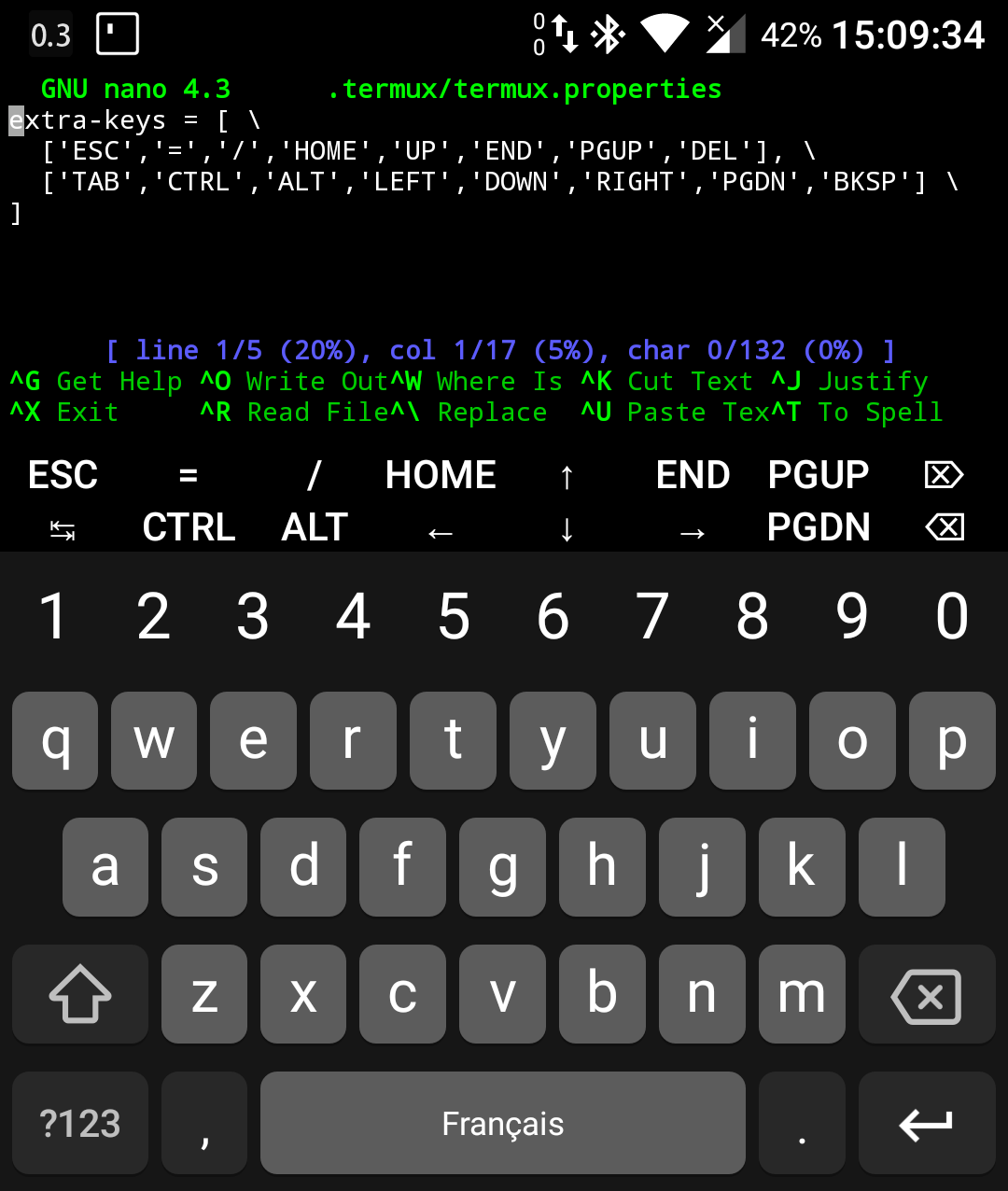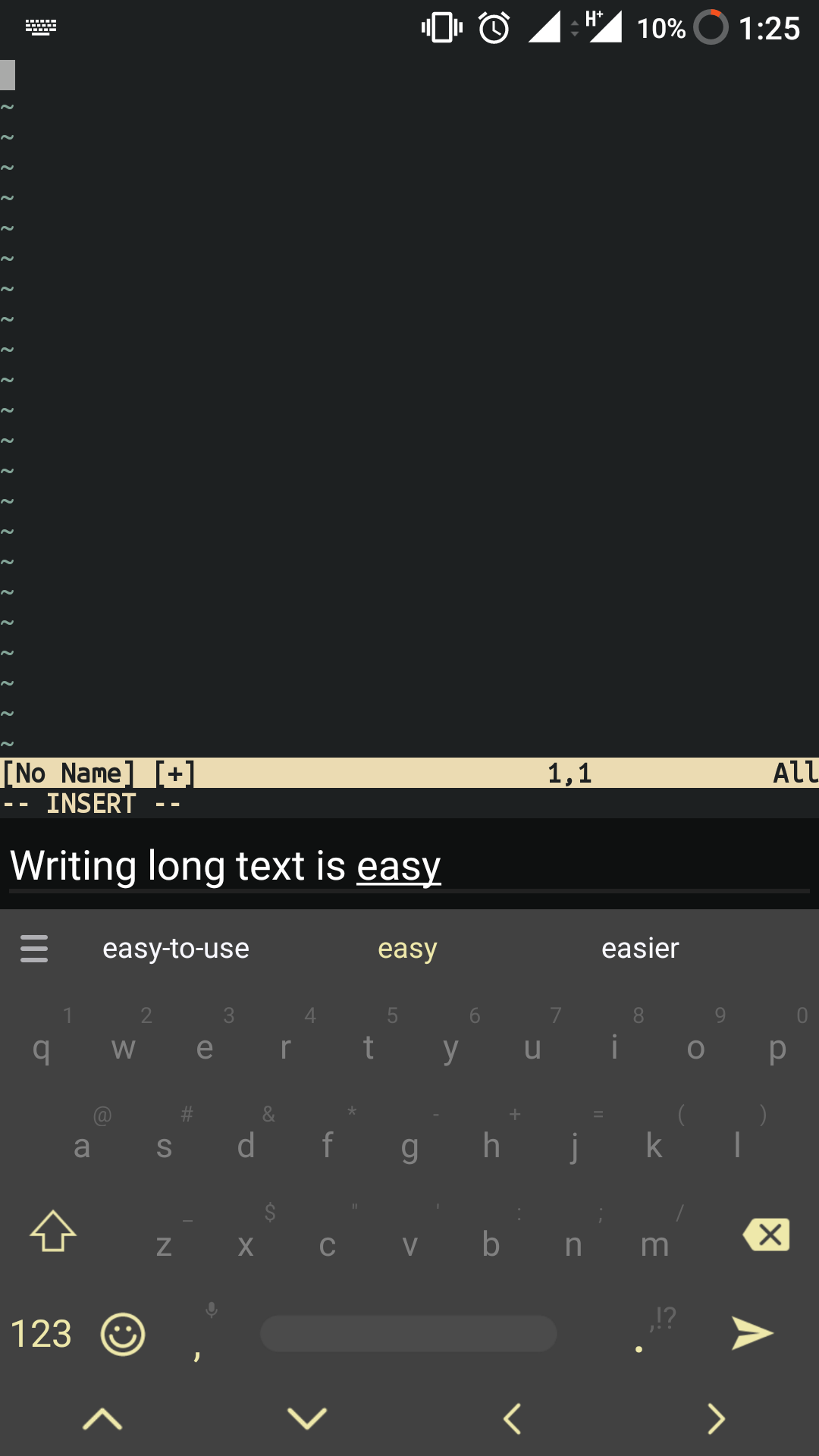Touch Keyboard: Difference between revisions
No edit summary |
|||
| Line 1: | Line 1: | ||
<blockquote>It is easiest to have websites in your pocket📲 | |||
The virtual keyboard is the lightest of all, and with multi-finger typing💅 | |||
Lightening many fingers speed is enlightening, to say the least👂 | |||
Will we ever forget that 🐁 mouse? The one matrix transformed into a tap tap at the window of a little brick 🏠 house.</blockquote> | |||
Using the Ctrl key is necessary for working with a terminal * but most touch keyboards do not include one. For that purpose Termux uses the Volume down button to emulate the Ctrl key. For example, pressing Volume down+L on a touch keyboard sends the same input as pressing Ctrl+L on a hardware keyboard. | Using the Ctrl key is necessary for working with a terminal * but most touch keyboards do not include one. For that purpose Termux uses the Volume down button to emulate the Ctrl key. For example, pressing Volume down+L on a touch keyboard sends the same input as pressing Ctrl+L on a hardware keyboard. | ||
Revision as of 02:00, 8 September 2017
It is easiest to have websites in your pocket📲
The virtual keyboard is the lightest of all, and with multi-finger typing💅
Lightening many fingers speed is enlightening, to say the least👂
Will we ever forget that 🐁 mouse? The one matrix transformed into a tap tap at the window of a little brick 🏠 house.
Using the Ctrl key is necessary for working with a terminal * but most touch keyboards do not include one. For that purpose Termux uses the Volume down button to emulate the Ctrl key. For example, pressing Volume down+L on a touch keyboard sends the same input as pressing Ctrl+L on a hardware keyboard.
The result of using Ctrl in combination with a key depends on which program is used, but for many command line tools the following shortcuts works:
- Ctrl+A → Move cursor to the beginning of line
- Ctrl+C → Abort (send SIGINT to) current process
- Ctrl+D → Logout of a terminal session
- Ctrl+E → Move cursor to the end of line
- Ctrl+K → Delete from cursor to the end of line
- Ctrl+L → Clear the terminal
- Ctrl+Z → Suspend (send SIGTSTP to) current process
The Volume up key also serves as a special key to produce certain input:
- Volume Up+E → Escape key
- Volume Up+T → Tab key
- Volume Up+1 → F1 (and Volume Up+2 → F2, etc)
- Volume Up+0 → F10
- Volume Up+B → Alt+B, back a word when using readline
- Volume Up+F → Alt+F, forward a word when using readline
- Volume Up+X → Alt+X
- Volume Up+W → Up arrow key
- Volume Up+A → Left arrow key
- Volume Up+S → Down arrow key
- Volume Up+D → Right arrow key
- Volume Up+L → | (the pipe character)
- Volume Up+H → ~ (the tilde character)
- Volume Up+U → _ (underscore)
- Volume Up+P → Page Up
- Volume Up+N → Page Down
- Volume Up+. → Ctrl+\ (SIGQUIT)
- Volume Up+V → Show the volume control
- Volume Up+Q → Show extra keys view
Extra keys view
Termux also has an extra keys view. It allows you to extend your current keyboard with the keys ESC, CTRL, ALT, TAB, -, / and \|. To enable the extra keys view you have to long tap on the keyboard button in the left drawer menu. You can also press Volume Up+Q.
Text input view
Terminal emulators usually do not support the advanced features of touch keyboards like autocorrect, prediction and swipe typing. To solve this, Termux has a text input view. Text entered in it will get pasted to the terminal. Because it's a native Android text input view, all touch keyboard features will work. To access the text input view you have to swipe the extra keys view to the left.

